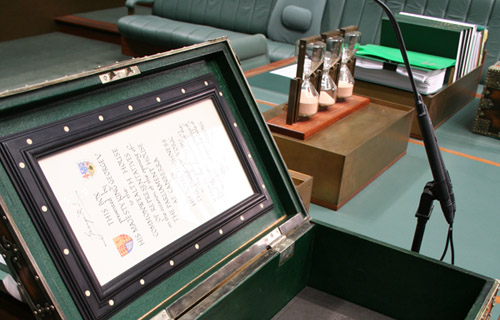Newly released data from the 2018 Census shows that the Christchurch central business district (CBD) is bouncing back after the 2010/2011 earthquakes, with more than 11,000 additional workers in the CBD than at the time of the 2013 Census, Stats NZ said today.
This was a 77.0 percent increase, compared with 37.2 and 1.7 percent increases, for Auckland and Wellington CBDs respectively. Auckland’s CBD workforce was the largest, with almost 100,000 people at the time of the 2018 Census, while over 76,000 employed people gave a workplace address in central Wellington.
| Area | 2006 | 2013 | 2018 |
| Auckland | 64656 | 72489 | 99420 |
| Wellington | 65022 | 75021 | 76269 |
| Christchurch | 36018 | 14946 | 26472 |
The newly released data provides information about where people live, work, and study. It also includes information about the means of transport people used to commute to work and study, and is available at statistical area level 2 (SA2). SA2 is a statistical output geography with an approximate population of 1,000 to 4,000 people.
“Previous censuses have shown that the number of people commuting into our largest cities from outlying towns and areas has increased since the 1990s,” senior manager census data delivery Susan Hollows said.
“Data from the 2018 Census allows us to understand more recent trends, and we see considerable variation in employment patterns in New Zealand’s largest cities.”
Employment growing in Christchurch city and outlying districts
After the earthquakes in 2010/11, employment grew outside the Christchurch city centre. Middleton overtook Christchurch Central as the largest centre of employment, with over 7,500 people giving a workplace address there in the 2013 Census, compared with just over 2,000 in Christchurch Central. This dispersed pattern of employment can still be seen in the 2018 data, however, there was also a strong growth in the number of people working in the centre of the city. In 2018, 26,472 people said they worked in the city centre, up from 14,946 people in 2013.
Fewer people commuted into Christchurch from outlying districts in 2018
In 2018, almost 3,000 people commuted into Christchurch city from Waimakariri and Selwyn Districts. Just under a third of people in Waimakariri District (32.2 percent) and 38.0 percent of the employed population of Selwyn District worked in Christchurch city in 2018. This proportion has fallen since 2013, when almost half of employed people in Waimakariri and Selwyn Districts (46.3 percent and 49.0 percent respectively) worked in Christchurch city.
Developments such as IZONE Southern Business Hub in the Selwyn District town of Rolleston have provided more local employment opportunities – 1,347 people said they worked in this area in 2018, compared with 441 in 2013 and 198 in 2006.
1 in 7 Aucklanders work in the CBD
In 2010, the four cities of Auckland merged with surrounding districts to form one council, made up of 21 local boards. Almost 100,000 people, which equated to 1 in 7 employed people in Auckland, worked in the CBD in 2018, an increase from 1 in 8 in both 2013 and 2006. There were also concentrated areas of employment outside the Auckland CBD, and other SA2s with substantial workforces, including Penrose (24,675), East Tamaki (23,382), North Harbour (23,163), Auckland Airport (23,073), Newmarket (14,646), and Manukau Central (14,466).
Wellington city, the centre of New Zealand’s government, has more concentrated employment patterns. More than 76,000 people were employed in the Wellington CBD, making up over a third of the working population of the region (35.1 percent of people whose workplace address could be coded to SA2 level). This rose to almost two-thirds for employed people living within Wellington city. The small area (SA2) of Wellington Central alone employed 43,794 people. Outside the Wellington CBD, the SA2 areas with the largest workforces were Porirua Central and Hutt Central North, with 6,717 and 6,210 people respectively.
CBD workers more likely to use public transport
Using data from the 2018 Census, Car streets ahead for travel to work and education showed that workers in the Wellington region were the most likely to travel to work via public transport or active modes.
“Public transport includes buses, trains, trams, and ferries, while active modes of transport include walking, jogging, or cycling,” Mrs Hollows explained.
The location of people’s workplaces had a big impact on travel modes. Almost two-thirds (64.0 percent) of employed people in greater Wellington (Wellington, Porirua, Upper and Lower Hutt cities), who worked in the Wellington CBD, either took public transport or used active modes to get to work. This proportion was only one-third when people worked outside the CBD.
The picture was similar in Auckland, with around half (1 in 2) of the Auckland residents who worked in the CBD using public transport or active modes, compared with only 1 in 8 who worked outside the CBD. For both Wellington and Auckland, the use of public transport was much more common than active modes for CBD workers.
In the greater Christchurch area (consisting of Christchurch city, and Waimakariri and Selwyn Districts), travelling by car was the dominant form of transport for people working both inside and outside the CBD (at 75.0 percent and 87.1 percent respectively). However, unlike Wellington and Auckland, active modes of transport were more common than public transport for workers in the Christchurch CBD, with more than three times as many people walking, cycling, or jogging than catching the bus or ferry.
| Area | Drive a private or company car or passenger (including in company bus) | Public transport | Active transport | Other |
| Auckland CBD | 47.2 | 38.2 | 12.3 | 2.3 |
| Other Auckland | 87 | 7.3 | 4.5 | 1.2 |
| Wellington CBD | 33.3 | 40.3 | 23.7 | 2.7 |
| Other greater Wellington | 78.3 | 8.6 | 11.7 | 1.5 |
| Christchurch CBD | 75 | 7.6 | 16 | 1.5 |
| Other greater Christchurch | 87.5 | 3.1 | 8.3 | 1.2 |
See commuting patterns in Auckland, Wellington, and greater Christchurch for further information about commuting in 2013.
Data visualisation competition
On 17 June Stats NZ launched a data visualisation competition to find an original, fun, and interactive visual representation of the 2018 Census commuter data.
See ‘There and back again‘ for more information and to enter.
About the data
The tables below give details of the statistical areas we have used to define the Auckland, Wellington, and Christchurch CBDs discussed in this article. For Wellington and Christchurch we have calculated the CBD by including the central SA2s with the largest numbers of workers. For Auckland we have used the Auckland council definition of the CBD.
We have calculated percentages of people working in the CBD from people whose workplace address could be coded to SA2 level.
| Number of employed people with a workplace address in Wellington and Christchurch CBDs, 2018 Census | |||
| Wellington CBD | Christchurch CBD | ||
| SA2 | Number | SA2 | Number |
| Wellington Central | 43,794 | Christchurch Central-West | 7,851 |
| Pipitea-Kaiwharawhara | 10,755 | Christchurch Central-North | 2,031 |
| Thorndon | 9,705 | Christchurch Central | 7,902 |
| Dixon Street | 6,543 | Christchurch Central-East | 765 |
| Courtenay | 5,472 | Christchurch Central-South | 7,929 |
| Total, Wellington CBD | 76,269 | Total, Christchurch CBD | 26,472 |
| Number of employed people with a workplace address in Auckland CBD, 2018 Census | |||
| SA2 | Number | SA2 | Number |
| Quay Street-Customs Street | 16,131 | Symonds Street North West | 2,283 |
| Queen Street | 14,640 | Symonds Street West | 3,132 |
| Wynyard-Viaduct | 14,538 | Hobson Ridge Central | 1,152 |
| Hobson Ridge North | 11,112 | Hobson Ridge South | 2,220 |
| Shortland Street | 9,096 | Auckland University | 4,758 |
| Queen Street South West | 4,287 | Symonds Street East | 1,560 |
| Anzac Avenue | 2,043 | Karangahape | 3,138 |
| Victoria Park | 8,844 | The Strand | 474 |
| Total, Auckland CBD | 99,420 | ||
| Note: this is Auckland council’s official definition of the CBD. | |||
About the 2018 Census dataset
We combined data from the census forms with administrative data to create the 2018 Census dataset, which meets Stats NZ’s quality criteria for population structure information.
We added real data about real people to the dataset where we were confident the people should be counted but hadn’t completed a census form. We also used data from the 2013 Census and administrative sources and statistical imputation methods to fill in some missing characteristics of people and dwellings.
Data quality for 2018 Census provides more information on the quality of the 2018 Census data. An independent panel of experts has assessed the quality of the 2018 Census dataset. The panel has endorsed Stats NZ’s overall methods and concluded that the use of government administrative records has improved the coverage of key variables such as age, sex, ethnicity, and place. The panel’s Initial Report of the 2018 Census External Data Quality Panel assessed the methodologies used by Stats NZ to produce the final dataset, as well as the quality of some of the key variables. Its second report 2018 Census External Data Quality Panel: Assessment of variables assessed an additional 31 variables.
In its third report, Final report of the 2018 Census External Data Quality Panel, the panel made 24 recommendations, several relating to preparations for the 2023 Census. Along with this report, the panel, supported by Stats NZ, produced a series of graphs summarising the sources of data for key 2018 Census individual variables, 2018 Census External Data Quality Panel: Data sources for key 2018 Census individual variables.
Quick guide to the 2018 Census (updated 16 September 2019) outlines the key changes we introduced as we prepared for the 2018 Census and the changes we made once collection was complete.
The geographic boundaries are as at 1 January 2018. See Statistical standard for geographic areas 2018.
Definitions and metadata
2018 Census – DataInfo+ provides information about methods and related metadata.
2018 Census information by variable and quality – DataInfo+ provides information about the variables and their quality.
Data quality ratings for 2018 Census variables provides information on data quality ratings.








